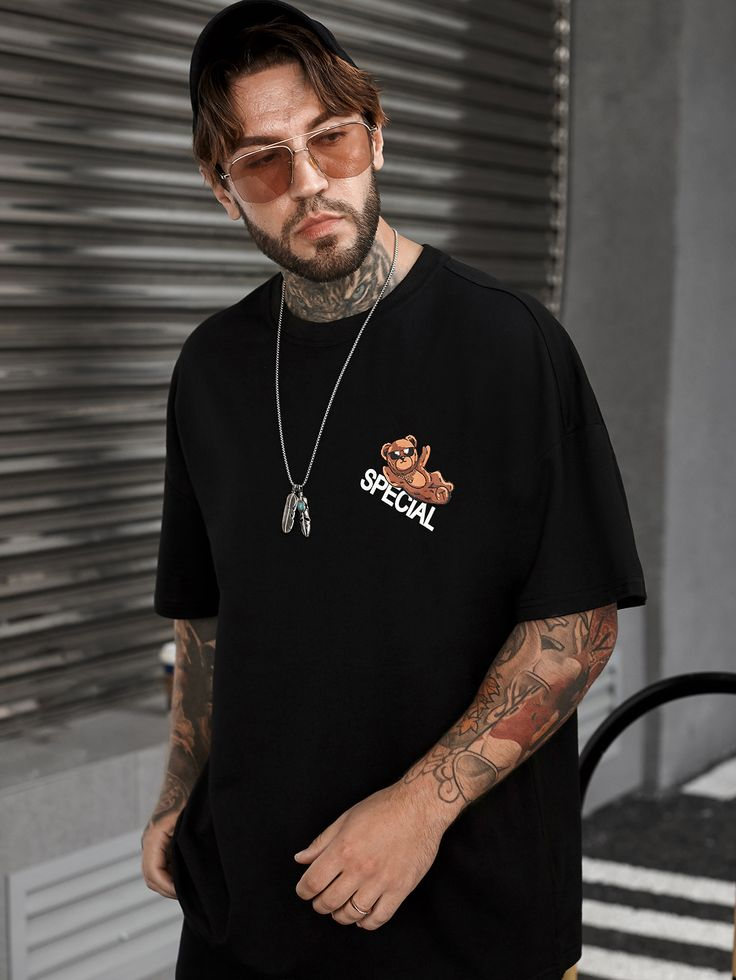Currently Empty: $0.00

The story of the T-shirt is a remarkable tale of transformation—from a humble piece of underwear to an international fashion staple. This evolution didn’t happen overnight; it was shaped by historical events, technological advancements, and social shifts that all contributed to the T-shirt’s rise in popularity.
The Birth of the T-shirt: Early 20th Century
While it is challenging to pinpoint the exact moment the T-shirt came into existence, most historians agree that its precursor was born out of the military’s need for practical, lightweight undergarments. During the Spanish-American War in the late 19th century, U.S. soldiers were provided with short-sleeved cotton shirts that were more comfortable and breathable than the woolen garments they had previously worn. These garments, which were initially used as underclothing, were the ancestors of the modern T-shirt.
The T-shirt gained further traction in the early 20th century when it was worn by workers in the U.S. during the industrial boom. The garment was convenient, affordable, and versatile, making it ideal for laborers who needed durable clothing for manual work. However, it wasn’t until Hollywood embraced the T-shirt in the 1930s and 1940s that it began to be seen as more than just an undergarment.
Hollywood and the T-shirt’s Rise to Fame
The T-shirt became a cultural phenomenon when iconic movie stars like Marlon Brando and James Dean wore them in films such as A Streetcar Named Desire (1951) and Rebel Without a Cause (1955). These actors famously wore plain, tight-fitting T-shirts in their roles, showcasing a relaxed yet rebellious image that resonated with young people. Suddenly, the T-shirt was no longer just for workers and soldiers; it became a symbol of youthful rebellion and individualism.
In the 1960s and 1970s, the T-shirt became an essential part of counterculture movements. Graphic T-shirts, featuring bold political slogans, peace signs, and psychedelic art, became highly popular among the youth, especially during the social revolutions of the time. The T-shirt was now a form of expression, a canvas for protest against the establishment, and a way to communicate personal beliefs, making it an essential piece of fashion in the era of change.
T-shirts and the Emergence of Streetwear Culture
The rise of streetwear in the 1980s and 1990s was another pivotal moment for the T-shirt. Brands like Supreme, Stüssy, and A Bathing Ape used graphic T-shirts as part of their streetwear collections, turning these simple garments into fashion statements. These T-shirts featured bold, eye-catching designs that appealed to the youth subcultures of the time, including skaters, hip-hop enthusiasts, and graffiti artists. The T-shirt became a symbol of urban youth culture and a way for individuals to express their identity.
The influence of music, particularly the rise of hip-hop and rock bands, also played a significant role in the T-shirt’s evolution during this period. Fans of bands and artists began wearing T-shirts with logos, album covers, and tour dates, creating a form of music-based fashion that remains prevalent today. These T-shirts not only served as merchandise but also as a way for fans to connect with the music and the artists they admired.
The T-shirt in the Digital Age: Customization and Innovation
With the advent of digital printing technology in the late 20th and early 21st centuries, the T-shirt became an even more powerful medium for self-expression. Custom T-shirt printing allowed people to design their own shirts, creating one-of-a-kind garments that reflected their personalities, interests, and beliefs. Online platforms like Teespring and Redbubble further facilitated the growth of custom T-shirt culture, making it easier for artists to reach global audiences and for consumers to find unique designs that spoke to them personally.
The digital revolution also led to the rise of online fashion retailers, who capitalized on the T-shirt’s popularity by offering endless varieties of prints, styles, and fits. T-shirts have become part of the fast fashion industry, where new trends and designs emerge quickly, and consumers can buy the latest styles with just a few clicks. However, this has also led to the rise of sustainability concerns within the fashion industry.
Sustainability and the Modern T-shirt
As awareness of the environmental impact of fast fashion grows, many consumers and brands are now turning to sustainable alternatives. The production of cotton, especially non-organic cotton, can be resource-intensive, requiring large amounts of water and pesticides. In response, eco-conscious brands are using organic cotton, hemp, and recycled materials to produce more sustainable T-shirts. These fabrics are produced with fewer chemicals, less water, and often under fair labor conditions, ensuring that the environmental and social footprint of T-shirt production is minimized.
Another innovative approach to sustainability is the rise of second-hand and upcycled T-shirts. Thrift stores, vintage shops, and online resale platforms like Depop and Poshmark have contributed to a new generation of fashion consumers who value sustainability over the mass production of new clothing. The concept of circular fashion, where garments are reused, recycled, and repurposed, is gaining momentum, and T-shirts are at the forefront of this movement.
Technological Advancements in T-shirt Fabrics
The T-shirt of the future may look different from the ones we wear today, thanks to advancements in fabric technology. High-tech fabrics are being developed to improve the performance of T-shirts, especially for sports and outdoor activities. Moisture-wicking fabrics, which pull sweat away from the body, have made their way into activewear T-shirts, keeping athletes comfortable during intense workouts. T-shirts with built-in UV protection are also becoming more popular, offering a layer of defense against the sun’s harmful rays while providing the comfort and breathability of traditional T-shirt fabrics.
Additionally, there are T-shirts that feature antimicrobial properties, keeping them fresher for longer without the need for frequent washing. As the demand for functional fashion grows, T-shirts are likely to become more sophisticated, integrating advanced fabrics that enhance their comfort, durability, and performance.
T-shirts as Political and Social Statements
The T-shirt’s versatility is not just confined to its use in casual fashion; it has also become a powerful tool for making political and social statements. T-shirts featuring protest slogans, social justice messages, and advocacy for causes have been worn by activists and public figures to raise awareness and rally support. The T-shirt has long been used as a form of protest, from the anti-Vietnam War shirts of the 1960s to modern-day campaigns for climate change, gender equality, and racial justice.
For example, the “I AM a Man” T-shirts worn by Civil Rights activists during the 1968 Memphis Sanitation Workers’ Strike became an iconic symbol of the struggle for racial equality. More recently, T-shirts with messages like “Black Lives Matter” and “Save the Planet” have become integral to social movements around the world.
The T-shirt as a Canvas for Art and Design
Another important aspect of T-shirts is their ability to serve as a blank canvas for artists, graphic designers, and illustrators. From hand-painted designs to complex digital artwork, T-shirts have been used as a medium to showcase creativity. High-profile collaborations between streetwear brands and renowned artists or designers have elevated the T-shirt to an art form in itself. The concept of “wearable art” has become increasingly popular, with designers like Jeff Koons and Takashi Murakami partnering with brands like Louis Vuitton and Uniqlo to create limited-edition T-shirt collections that blur the lines between fashion and fine art.
Whether it’s a political statement, a pop culture reference, or an abstract design, the T-shirt remains an accessible and affordable way for individuals to express their creative ideas.
Conclusion: The Enduring Legacy of the T-shirt
The T-shirt has come a long way from its humble beginnings as a military undergarment. Today, it is a universal garment that transcends borders, cultures, and socioeconomic statuses. Whether worn as a form of self-expression, as part of a fashion trend, or as a statement of political or social beliefs, the T-shirt continues to evolve and adapt to the changing world.
As we look forward to the future of fashion, it’s clear that the T-shirt will remain a symbol of comfort, creativity, and personal identity. With the increasing focus on sustainability, innovation in fabric technology, and the continued role of the T-shirt as a cultural canvas, the humble T-shirt will likely remain a central piece of clothing in wardrobes around the world for many years to come.

